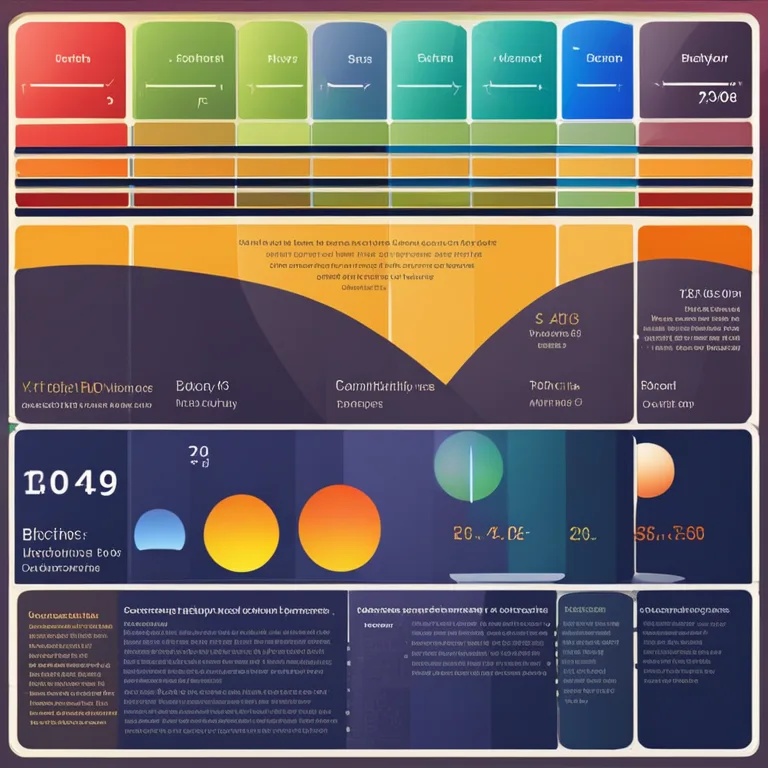
The Rhythms of Life: Mastering Biorhythm Reading
Discover the fascinating world of biorhythm reading and how it can provide insight into your personal, physical, emotional, and intellectual cycles.
article by Adrian Wallace
Introduction to Biorhythms
Biorhythms are believed to be the invisible waves that govern our lives, affecting our physical, emotional, and intellectual well-being. The concept, which emerged in the late 19th century, suggests that from the moment of our birth, these three primary cycles ebb and flow in predetermined patterns. A biorhythm reading aims to chart these rhythms to potentially forecast the days of heightened capabilities or reduced function, guiding individuals in making decisions that align with their body's natural patterns. As such, biorhythm analysis has woven its way into the tapestry of modern holistic practices as a personal awareness tool.

The Three Primary Cycles
These primary cycles are divided into the Physical (23-day cycle), Emotional (28-day cycle), and Intellectual (33-day cycle) spans. The Physical cycle is believed to influence strength, coordination, and overall vitality. The Emotional cycle governs mood, creativity, and perception of social situations. Lastly, the Intellectual cycle is thought to affect cognitive functions such as analysis, learning capacity, and memory. Contemporary software and apps have made charting these cycles easier than ever, allowing for daily monitoring and forecasting to assist in personal planning and development.

Modern Biorhythm Calculations
As we step into 2024, biorhythm readings have become more sophisticated due to advances in technology. Users can input their date of birth into numerous online calculators or applications to receive instant biorhythm charts. Some platforms use algorithms that incorporate lunar cycles and planetary positions, integrating astrology with biorhythm theory for more complex insights. Understanding the interplay between these factors and the traditional biorhythm charts could potentially enhance a person’s ability to make geared choices towards optimal days for certain activities.

Application of Biorhythm Readings
Individuals use biorhythm readings to plan significant events, undertake new ventures, or navigate challenging periods. For instance, one might avoid scheduling an important exam or a rigorous physical competition during a downward physical or intellectual cycle, respectively. Conversely, a peak in the emotional cycle may be the opportune time to engage in social gatherings or creative projects. By recognizing these patterns, one can strive for harmony with their inherent biological rhythms.

Critical Perspectives
While biorhythm theory has a dedicated following, it is also met with skepticism from the scientific community due to a lack of empirical evidence. Critics argue that biorhythm predictions are too general and that individuals may experience self-fulfilling prophecies. Proponents, however, maintain that similar to many holistic practices, the value of biorhythm reading lies in its ability to encourage self-reflection and mindfulness, rather than serving as a definitive predictor of one’s day-to-day life.
The Future of Biorhythms
Looking ahead, it's conceivable that biorhythm theory will continue to evolve and integrate with other systems like artificial intelligence and biofeedback technologies. This progression could lead to even more personalized and accurate readings, solidifying its position in the realm of personal development tools. Whether one subscribes to the idea of biorhythms or not, it is an intriguing aspect of the broader conversation about how our bodies and minds operate on cyclical patterns.
Published: 1/4/2024
Modified: 1/4/2024
More predictions
Come back here soon to learn more about yourself and your future


The Practical Uses of Biorhythms In Today's Life
Discover the significant applications of biorhythm theory in everyday living, from health optimization to decision-making.


The Accuracy of Biorhythms: Fact or Fiction?
Examine the validity of biorhythms in predicting personal vitality and life cycles in this in-depth analysis.


The Practical Uses of Biorhythms in Daily Life
Discover the practical applications of biorhythms across various aspects of daily living, from personal health to decision-making.